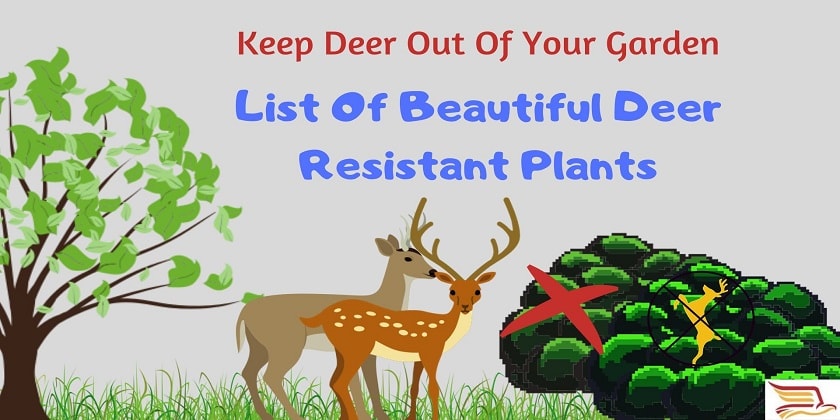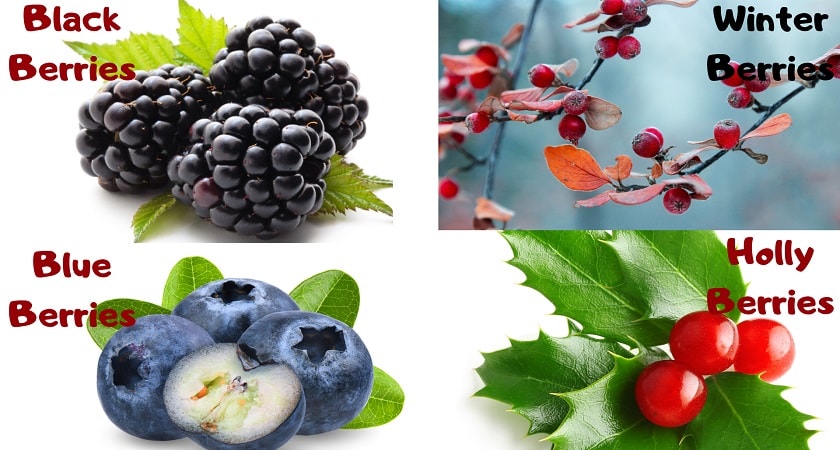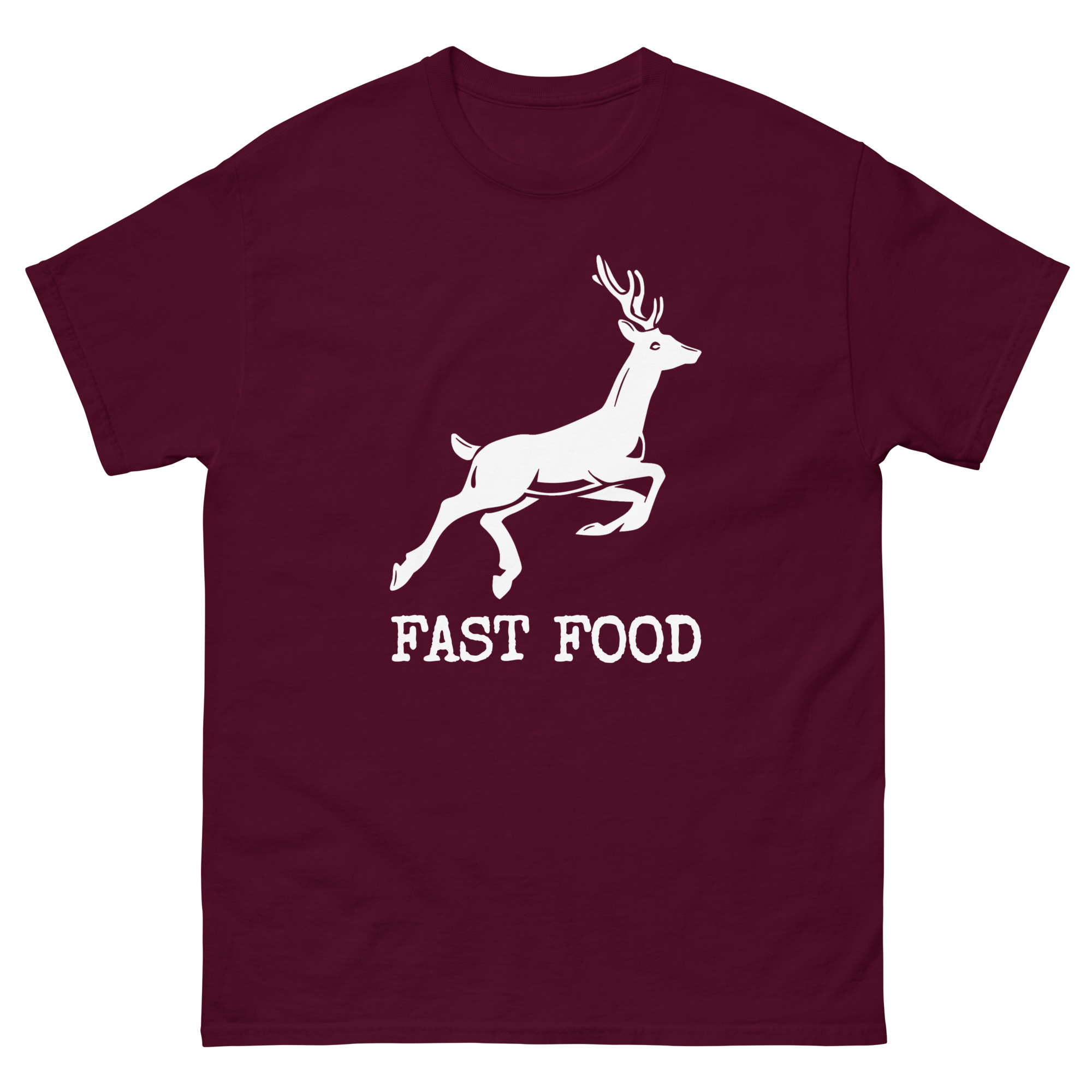If you reside in a region with a large deer population, you’re probably all too aware of the harm these animals will cause to a garden. If you are looking for deer-resistant plants then we are here with the list of various plants that will keep deer away from your property.
Beneath traditional circumstances, deer are relatively choosey regarding what they eat, however, once the food is scarce, they become so much less fastidious. In the USA, hungry deer cause several bucks of damage each year, to native farms and nurseries, commercial properties, public lands, and residential landscapes. According to Actionbioscience, there is a count of 30 million deer in the United States.

Landscape Plants Rated by Deer Resistance is a valuable resource for gardeners so much on the far side States. It teams decorative plants into four categories: seldom broken, rarely severely broken, often severely broken and regularly severely broken. Additionally to the perennials, annuals, bulbs, and groundcovers listed below, the total list conjointly includes trees, shrubs, vines and decorative grasses. Deer-resistant plants are the only strong step you have to deter them.
Related Post:- Best Meat Grinder For Deer Processing
Here is a list of plants that were found to be “rarely damaged”. Also, they are a smart place to begin if you are making an attempt to make your yard and garden less appealing to deer.
The ornamental plants and shrubs in your garden ought to be a feast for the eyes, not a banquet for the native deer population. Though it’s not possible to create a yard fully deer-proof, you’ll fill it with plants deer hate. For a natural look, this deer-resistant wildflower mix is nice, otherwise, look into the suggestions below.
What Do Deer Eat?
These embody most thorny plants and people with fuzzy or tough leaves. What deer eat and what quantity of it, depends greatly on the season, the actual plant, the weather and the accessibility of alternative foods. Usually speaking, the more hungry they are, the less selective they will be. Deer loves to eat a large variety of plants, shrubs, fruits, and flowers. But the plants we have mentioned above are deer-resistant plants so they will avoid eating them.

Deer love narrow-leaf evergreens, particularly arborvitae and deer show a preference for hostas, daylilies, and common ivy. Deer loves to eat many flowers and plants but some of them are abandoned by them because of their strong scent. The heaviest garden browsing is from Oct through Feb. However, several growers note that deer appear to like plants that are fertilised.
Deer will eat just about almost anything around them, unlike elk. Elk love to feed on grasses only. Here we have categorized some bushes and plants that deer avoid eating. Deer love feeding a large variety of bushes and plants but some of them have a strong smell and deer will never going to eat them.
If you love gardening and live in deer deer-dominated area, you really need to know about these deer-resistant plants and shrubs. Moreover, It will definitely help you to grow your garden without any interference from deer.
Deer Resistant Bushes:

- JAPANESE SPIRAEA: Junipers have many alternative uses within the garden, from groundcovers and accent plantings to topiaries and privacy screens. Not only do they repel the cervid due to the volatile oils in their needles, but they are also drought tolerant and have few blighter issues. Furthermore, strive to grow taller junipers in a very tight fence to make a deer-proof botanic barrier in the function of fencing.
- BOXWOODS: Boxwoods are among the foremost versatile broad-leafed evergreens for a deer-resistant garden. Also, they are available in various shapes and sizes and take well to pruning, making them ideal for formal hedges, borders, and topiaries. However, deer appear to shun the enticing glossy, green foliage due to its robust scent.
- BUTTERFLY: If you would like to attract bees to your garden while avoiding deer, the shrub is a good alternative. Bees are drawn to the massive panicles of honey-scented blooms, that kind on elegant bowed branches from summer through fall. Flower colours area unit usually deep purple, pink, or pure white, though some hybrids have orange and gold blooms. The butterfly bush will grow as tall as ten feet tall with a variety of up to fifteen feet.
- CINQUEFOIL: Cinquefoil is one of the most effective flowering shrubs for season-long colour, brightening up the garden with cheerful saucer-shaped blooms from June through Sept. However, it’s discomposed by a few pests, most notably deer, that find the finely rough blue-green foliage unappealing.
Deer Resistant Plants:
There is a variety of plants that deer don’t like to eat. We can consider two major varieties:
1. Fragrant Plants: Deer turn up their noses at musky plants with sturdy scents. Herbs like sages, decorative salvias, lavenders, peonies, and bearded irises are among these “stinky” plants that deer tend to avoid.
2. Poisonous plants: Deer tend to stay far from daffodils, foxgloves, monkshood, and poppies. These are common flowers that have toxins that ruminants avoid.
List of some of the very well-known resistant Plants:
- Caryopteris: This standout plant reminds us of Russian sage. It’s scented, silvery-green foliage and clusters of violet-blue flowers in late summer and fall. We tend to love the approach this drought-resistant beauty adds slightly no-care colour to woody plant borders once most alternative shrubs have finished. It is one of the best deer-resistant plants.
- Chrysanthemum: Perhaps the known fall-blooming plant, chrysanthemum cultivars currently provide an astonishing variety of colors, from purples and pinks to a lot of ancient fall tones of red, rust, orange, and yellow. However, due to the plant’s scented foliage, you will not have to worry about deer munching away on yours as they make preparations for winter.
- Crocosmia: Crocosmia is nearly startlingly dramatic within the garden. Its sword-shaped leaves add great interest, however, they take a back seat to the clusters of bold red, orange or yellow flowers during the summer solstice. This clump-forming perennial gets larger and higher each year.
- Epimedium: A favourite of almost every gardener who fights dry, shady conditions, Epimedium may be a knockout selection with cute flowers (in shades of pink, red, orange, white, and yellow) and deer-resistant foliage. Also, Several choices of this splendidly simple ground cover are evergreen, giving it an additional level of interest.
- Joe Pye Weed: Bearing big puffs of reddish-purple flowers in late summer or early fall, this North American grassland perennial could be an excellent alternative for the rear of the bed or border. It reaches up to seven feet in ideal conditions, although smaller choices are accessible and attract butterflies but deter deer.
- Corydalis lutea: This perennial wins the prize for the best bloomer. This plant starts bearing its clusters of golden-yellow flowers in early spring and continues nonstop all the way to frost. Its ferny, blue-green foliage may be a delight, too. However, the deer do not appear to assume. Therefore, it is one of the solid deer-resistant plants.
- Geranium macrorrhizum: One of our favourite ground covers for shady sites, this big root herb offers woodsy-scented foliage and clusters of magenta, pink, or white flowers in early summer. However, it spreads nicely, while not turning invasive, to make a carpet of low-care colour even in dry, shady sites.
- Digitalis: You can typically judge foxglove to discourage deer as a result of its poisonous. It’s conjointly stunning with its tall spikes of pink, purple, cream, or white blooms in early summer. The foremost common foxgloves live for less than 2 years, however, if you allow them to drop seed, new plants can come dependably for years to come.
- Phlomis russeliana: This Mediterranean native offers fuzzy silver or inexperienced foliage and spikes of soppy yellow blooms in summer. However, if the plant is happy, it will rebloom through fall, therefore it is a nice middle-of-the-border plant. Also, It will keep deer away from your garden.
- Thalictrum: When you see the leaves, you’ll suppose the meadow rue sounds like a large relative of its relative, the Columbine. each is splendidly deer-resistant and supplies enticing blue-green foliage. Grassland rue’s blooms set it apart, though, clouds of flossy pink, purple, yellow, or white flowers float on top of the plant.
- Bergenia: This evergreen perennial attained its soubriquet from the sound it makes when you rub 2 thick, rubbery leaves along. It’s their texture that makes them a deer deterrent, however, we will not imagine feeding them either. So instead, we tend to relish their clusters of pink, red, or white season flowers.
Some of the other deer-resistant plants:
- Coreopsis.
- Baptisia.
- Bruneria.
- Dicentra.
- Rue.
- Salvia.
- Rosemary.
- Tansy.
- Thalictrum.
- Calendula.
- Cleome.
- Datura.
- Santolina.
- Stachys.
- Snapdragon.
- Strawflower.
- Matricaria.
- Nicotiana.
- Dusty Miller
- Forget-Me-Not
- Heliotrope
- Ageratum
- Larkspur
- Sweet Alyssum
- Poppy
- Rodgersia
- Nepeta.
- Peony.
- Perovskia.
- Pulmonaria.
- Agastache.
- Echinops.
- Monkshood.
- Statice.
- Lychnis.
- Arabis.
- Artemesia.
- Asarum.
- Buddleia.
- Euphorbia.
- Helleborus sp.
- Dame’s rocket.
- Hyssop.
- Iris.
- Jack-in-the-pulpit.
- Lavender.
- Lily of the Valley.
- Ligularia.
Deer Proofing Methods:
Growing deer-resistant plants in your garden is the best possible thing you can do. Deer love the tender new leaves and shoots of groundcovers once they initially emerge within the spring. To eliminate the temptation, treat the realm with a strong-smelling cervid repellent or one thing that conjointly doubles as a chemical-free chemical, like provender or fish emulsion. Also, “Be careful to not overfertilize, which can lead to the soft, succulent vegetative growth that deer love. Deer eat vegetables and fruits also. They can be attracted to them easily if around.
Simply half the suggested dosage at a given time can leave the odour but not overstimulate the plants,” advises Clausen. A deer grazing in a field may be a stunning sight. However, if you prefer plants, a deer in your yard means a hassle so along with the plants that deer eat, you need to grow these deer-resistant plants mentioned above.
To them, your landscape plantings and gardens are a free, all-you-can-eat restaurant with lots of menu selections and convenient, 24-hour access. However, deer love the constant landscapes humans do.
Furthermore, they’re creatures of the forest edge, thriving in areas that mix open meadows and woods. Their ideal home has a few trees, some fascinating shrubs and many grasses. If you’ve had to bother with deer, you already grasp the plants they love: cedar, yew, fruit trees, lilies, and hostas to call some. However, there are some plants deer appear to dislike.
Deer continuously needs to get on the alert for predators (coyotes, wolves, dogs, people). So sudden, surprising noises will send a deer running for cover. However, the challenge is to keep deer from turning conversant in the noise. If you move the devices around to totally different places in your garden, the deer can be confused and afraid.
You might be facing some issues while gardening in deer populated area. All you can do is, establish a high and strong fence along with deer-resistant plants and trees on your property. It will definitely work. Let us know if the article is helpful and informative for you. You can also share your incidents with deer and the problems you are facing because of this creature below in the comment section.














A well written, meaty article. An inexpensive anti-deer spray can be made with an egg. Add one egg to about 1 1/2 cps. water, beat, strain out the thick material, put in a spray bottle. (Even with deer resistant plants, they like to sample on new shoots, often ripping out the plant, and spitting the whole mess out. ). Reapply spray after every rain.
Yup you can do it